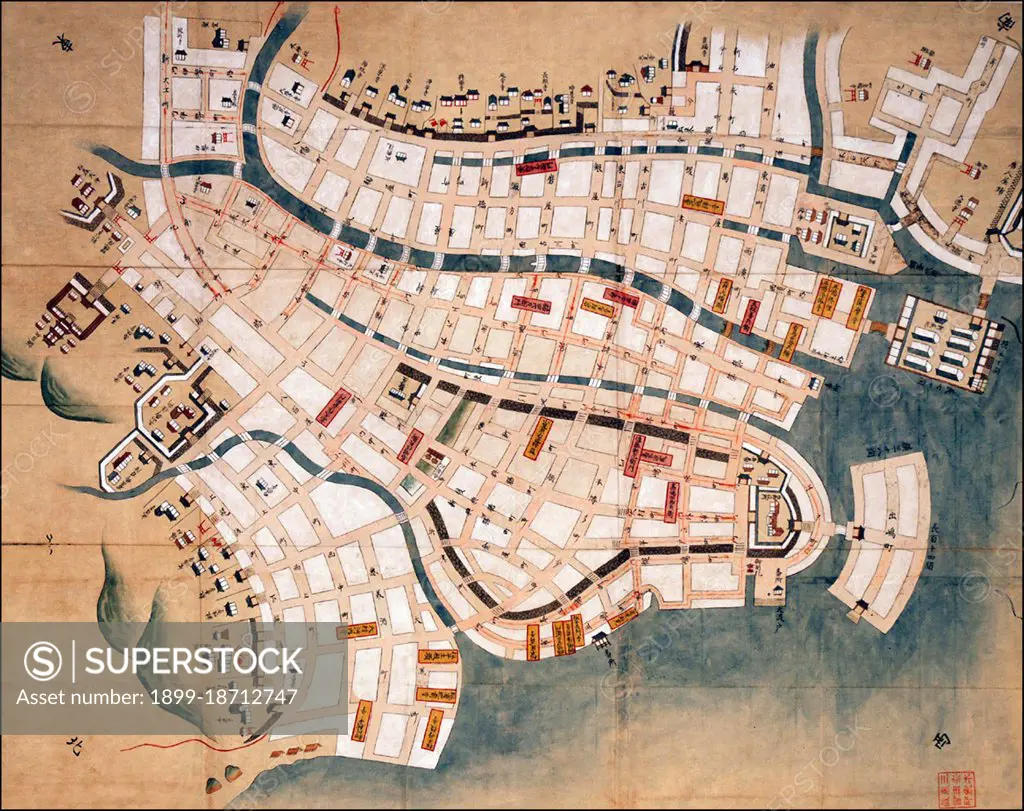Dejima (literally 'exit island'; Dutch: Desjima or Deshima, sometimes latinised as Decima or Dezima) was a small fan-shaped artificial island built in the bay of Nagasaki in 1634. This island, which was formed by digging a canal through a small peninsula, remained as the single place of direct trade and exchange between Japan and the outside world during the Edo period. Dejima was built to constrain foreign traders as part of the 'sakoku' self-imposed isolationist policy. Originally built to house Portuguese traders, it changed to a Chinese and Dutch trading post from 1641 until 1853. Covering an area of 120 m x 75 m (9000 square meters, or 0.9 hectares) it later became integrated into the city. 'Dejima Dutch Trading Post' has been designated a Japanese national historic site.
SuperStock offers millions of photos, videos, and stock assets to creatives around the world. This image of Dejima (literally 'exit island'; Dutch: Desjima or Deshima, sometimes latinised as Decima or Dezima) was a small fan-shaped artificial island built in the bay of Nagasaki in 1634. This island, which was formed by digging a canal through a small peninsula, remained as the single place of direct trade and exchange between Japan and the outside world during the Edo period. Dejima was built to constrain foreign traders as part of the 'sakoku' self-imposed isolationist policy. Originally built to house Portuguese traders, it changed to a Chinese and Dutch trading post from 1641 until 1853. Covering an area of 120 m x 75 m (9000 square meters, or 0.9 hectares) it later became integrated into the city. 'Dejima Dutch Trading Post' has been designated a Japanese national historic site. by Pictures From History/Universal Images is available for licensing today.
Looking for a license?
Click here, and we'll help you find it! Questions? Just ask!
Click here, and we'll help you find it! Questions? Just ask!
DETAILS
Image Number: 1899-18712747Rights ManagedCredit Line:Pictures From History/Universal Images/SuperStockCollection:
